Ah, the Dordogne … my favorite area of southern France.
Some think of it as the “other southern France” behind Provence. But I adore it — more hidden, delicious cuisine, medieval castles and chateaux, prehistoric cave art, and adorable cobbled villages.
In fact, the Dordogne is home to 10 of France’s les plus beaux villages, i.e., most beautiful villages.
This is my recommended one week in the Dordogne itinerary. I also give you tips on where to eat, stay, and play.
Snapshot Of One Week Dordogne Itinerary
Here’s a quick glance at my recommended itinerary:
- Sarlat-la-Caneda
- Beynac et Cazenac & La Rogue Gageac
- Rocamadour & Carennac or Collanges-la-Rouge
- Bergerac & Monpazier & Belves
- Domme & Chateau de Castlenaud
- Perigueux & Lez Eyzies/Grotte de Fonte de Guam
- Lascaux & Chateau Hauteforte or Saint-Amand de Coly
Quick Tips
- You’ll need a rental car to get around the Dordogne.
- You’ll need to make advance dinner (and possibly lunch) reservations, even when visiting in shoulder season and even in the small villages (where some of the best restaurants are!).
- The Lascaux IV and Fonte de Gaume pre-historic cave sites require pre-booking, many weeks in advance in high season and weeks in advance in shoulder season.
- I recommend visiting the Dordogne in late May, June, or September.
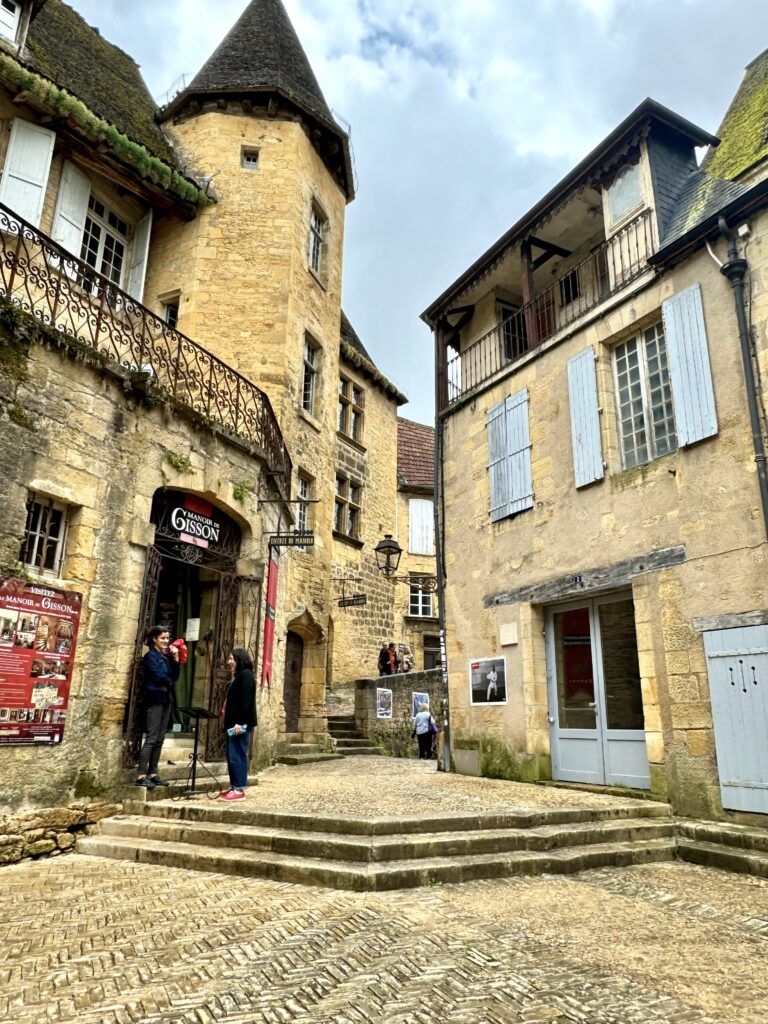

7 Days In The Dordogne Itinerary
Sarlat-la-Caneda
Beautiful Sarlat is the crown jewel of the Dordogne.
Vieux Sarlat is a UNESCO heritage site and the city’s medieval and Renaissance architecture is astounding. Sarlat is stuffed with Michelin restaurants, hosts an amazing twice weekly market, and even has a good small museum or two.
Be sure to park outside the medieval center. You have to park on the edges of the city.
We found a free parking lot at right when we approached the town center. You may also be able to find street parking.
>>> Click here to pre-book a guided walking tour and market visit
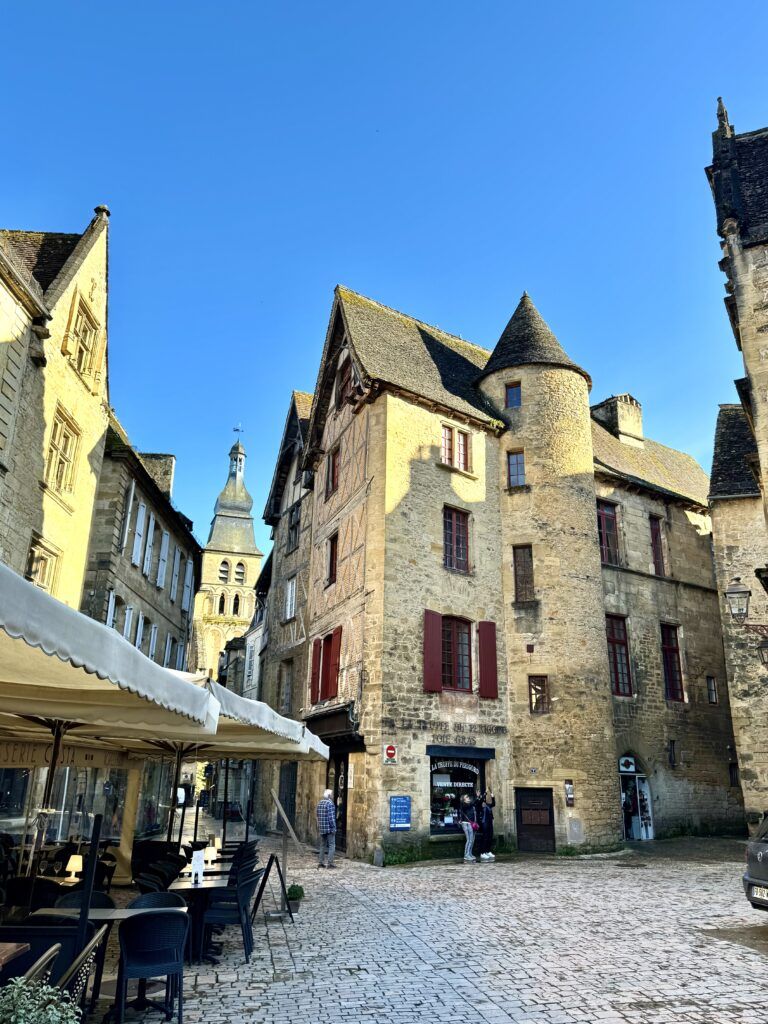
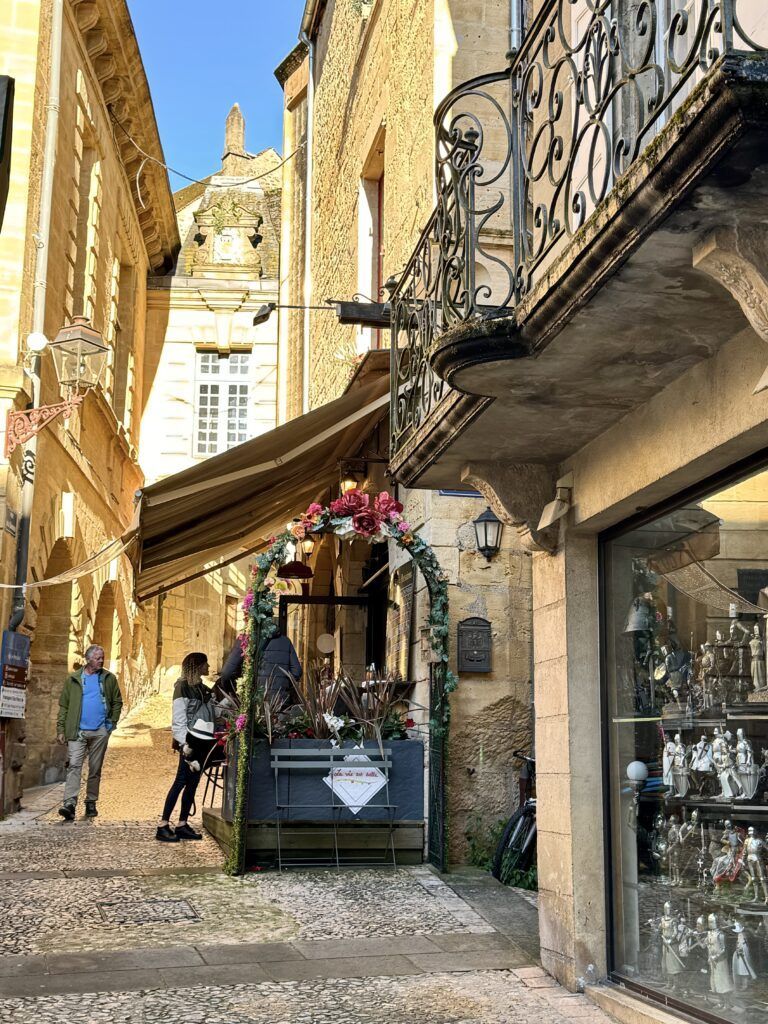
The main streets are the Rue de la Liberte and Rue de la Republique. Rue de la Republique, nicknamed La Traverse, runs between the picturesque medieval district and the town’s other ancient streets.
If you can, start at Place de la Liberte. It’s the hub of Sarlat and lined with gorgeous buildings from the 16th and 17th centuries.
If you want to see how the aristocracy lived in the Middle Ages, you should visit the Musee Gisson in the square. The building itself is gorgeous. And you’ll enjoy the period furnishings and curiosity closet.
Head down the street to admire the famous the Renaissance Maison de la Boetie, with mullioned windows and ornate decorations.
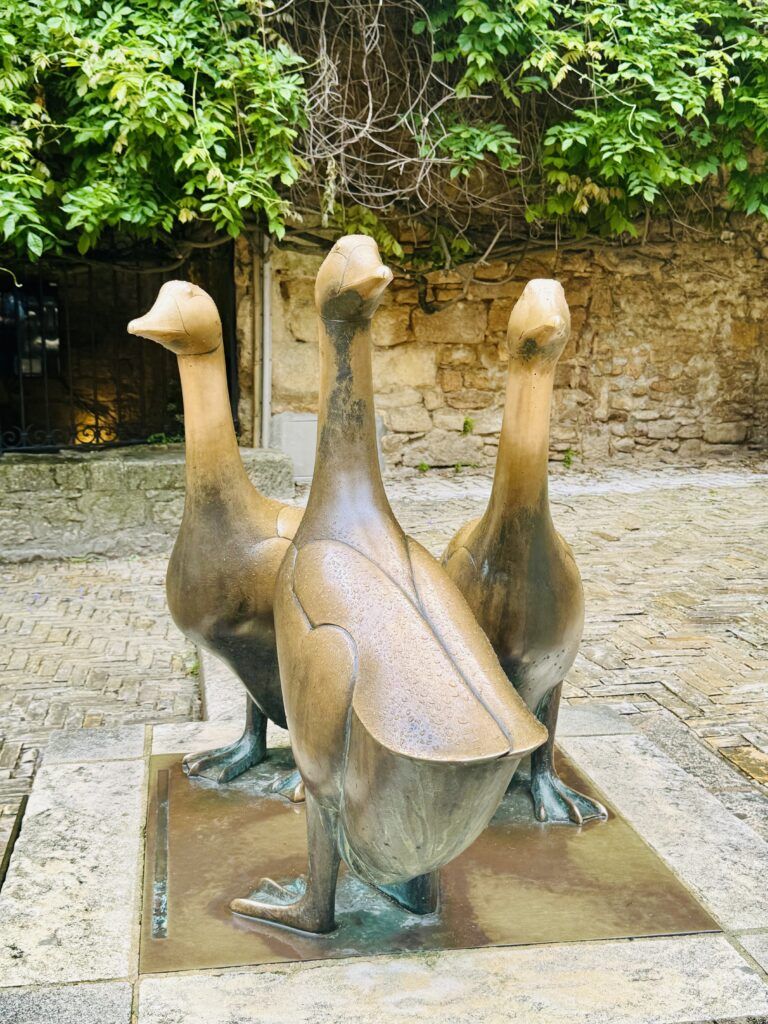
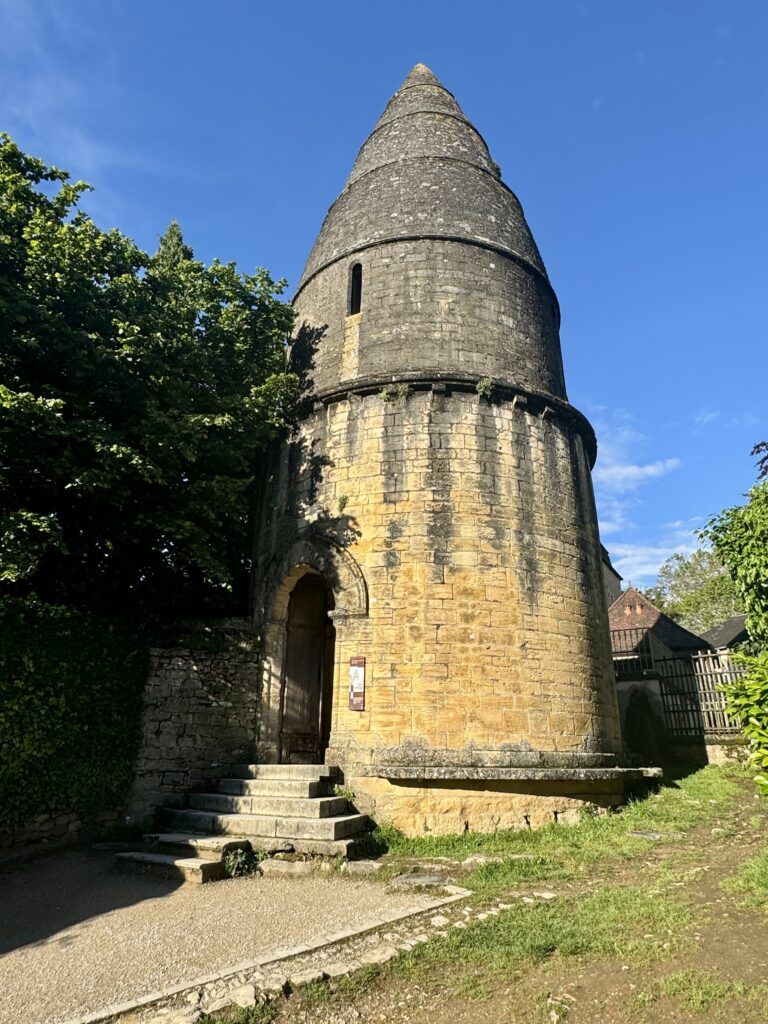
Then, turn left at Reu Montaigne to check out the rather peculiar looking medieval Lanterne des Morts and the Cathedrale Saint-Sacredos.
Cross the main drag and head down Rue de Siege and Rue Jean-Jacque Rousseau.
At the end of that, you’ll find the Place aux Oies. This is where you’ll find the iconic sculpture of bronze geese, which symbolize Sarlat’s expertise with fois gras.
You may also want to stroll down the nearby Rue de Consuls. The street is lined with gorgeous medieval townhouses.
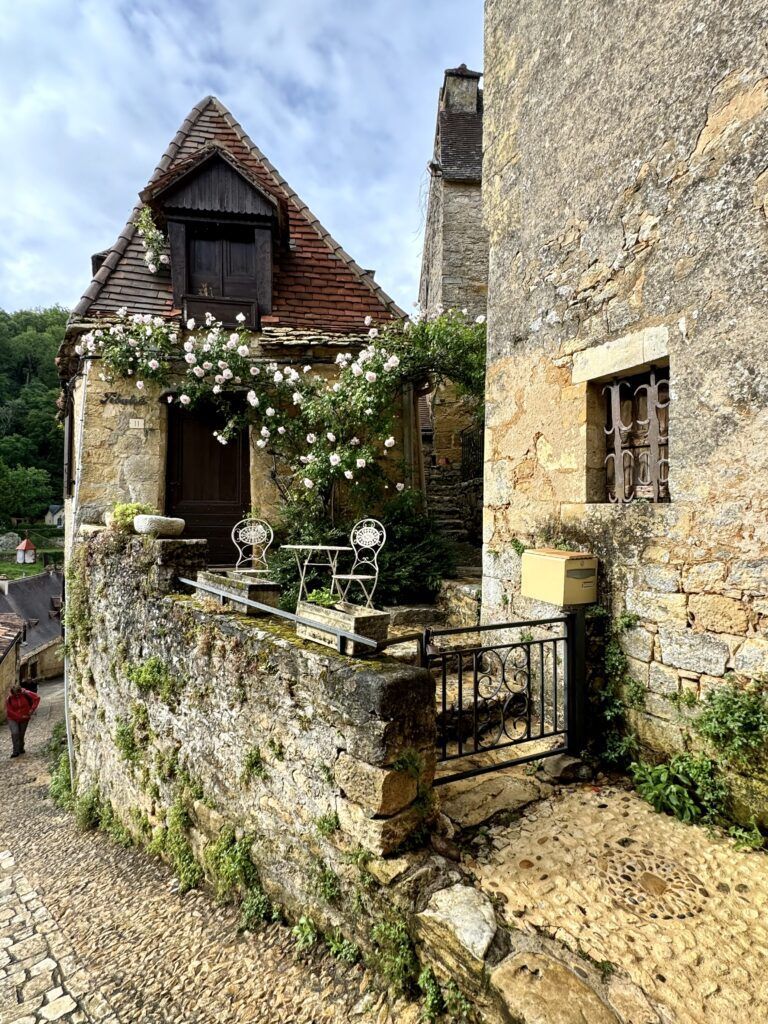
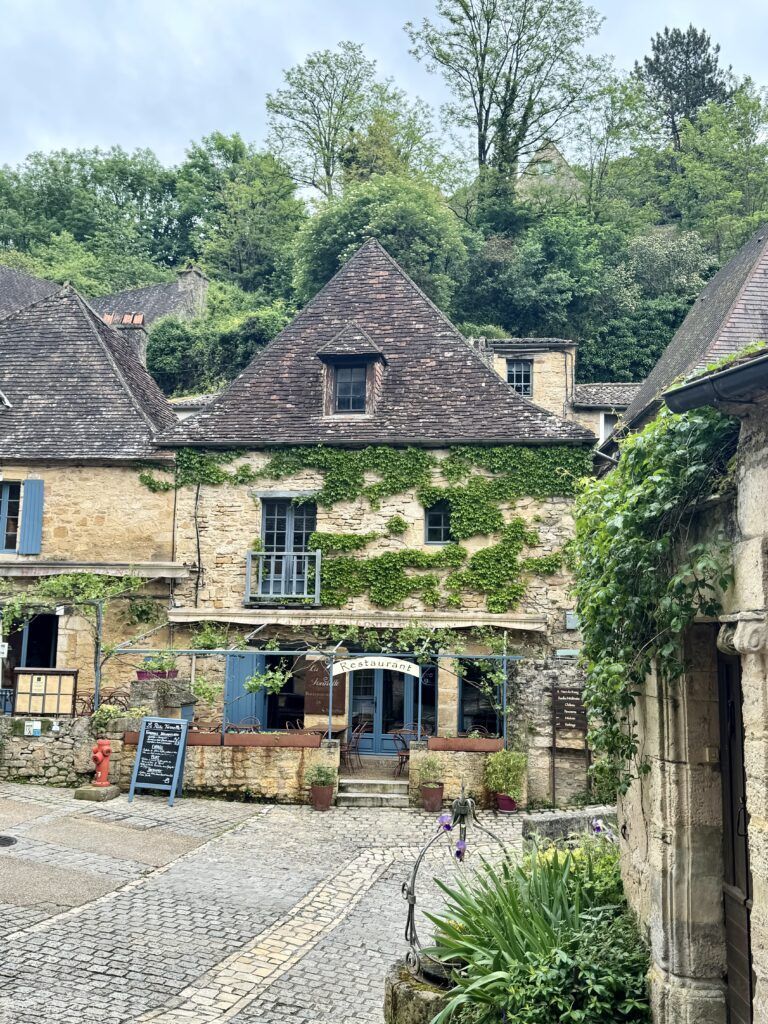
Beynac et Cazenac & La Roque Gageac
Both these towns are officially listed as les plus beaux villages in France. They are must visits and right next door to each other.
Beynac
Beynac is a fairytale town clinging to a cliff. It’s filled with twisting lanes that lead you vertically up to an imposing 12th century castle.
Beynac has attracted a clutch of artists and writers, including artists like Camille Pissarro. Today, the village is still filled with artist studios and artisan shops.
Perched at the tiptop is the Chateau de Beynac, which can be seen from afar. It was the seat of one of the four baronies in the region and a strategic stronghold in the Middle Ages.
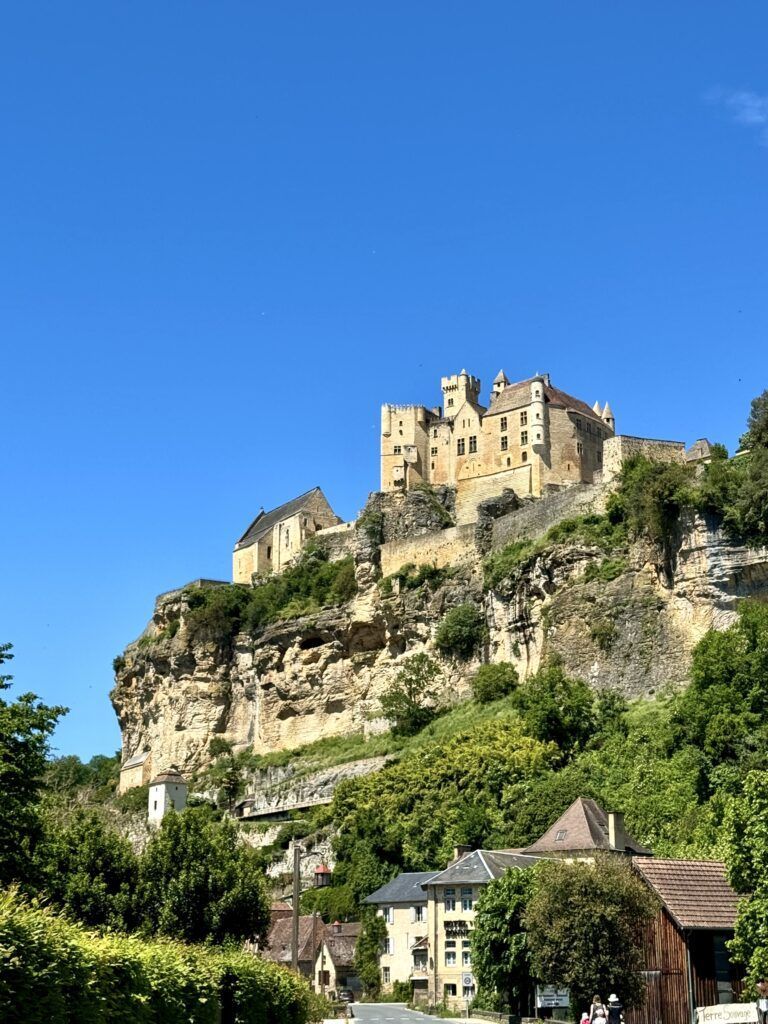

The castle was involved in the rivalry between Richard the Lionheart and his adversaries, particularly the French Crown and other local lords.
It’s a 20 minute steep uphill walk from the village to the castle. Alternatively, you can park the car at the top of the hill, just 1 minute away.
Entry to the castle is via a double moat and through lines of ramparts. You scan a QR code for the audio guide.
The 13th century keep is flanked by two other buildings. You can see an impressive great hall with vaulted ceilings, ramparts, the bedroom of Richard the Lionheart, and a period kitchen.
The views are simply stunning!
Break for lunch and dine at La Petite Tonelle. The restaurant serves up excellent traditional French cuisine in an ancient stone vaulted space.
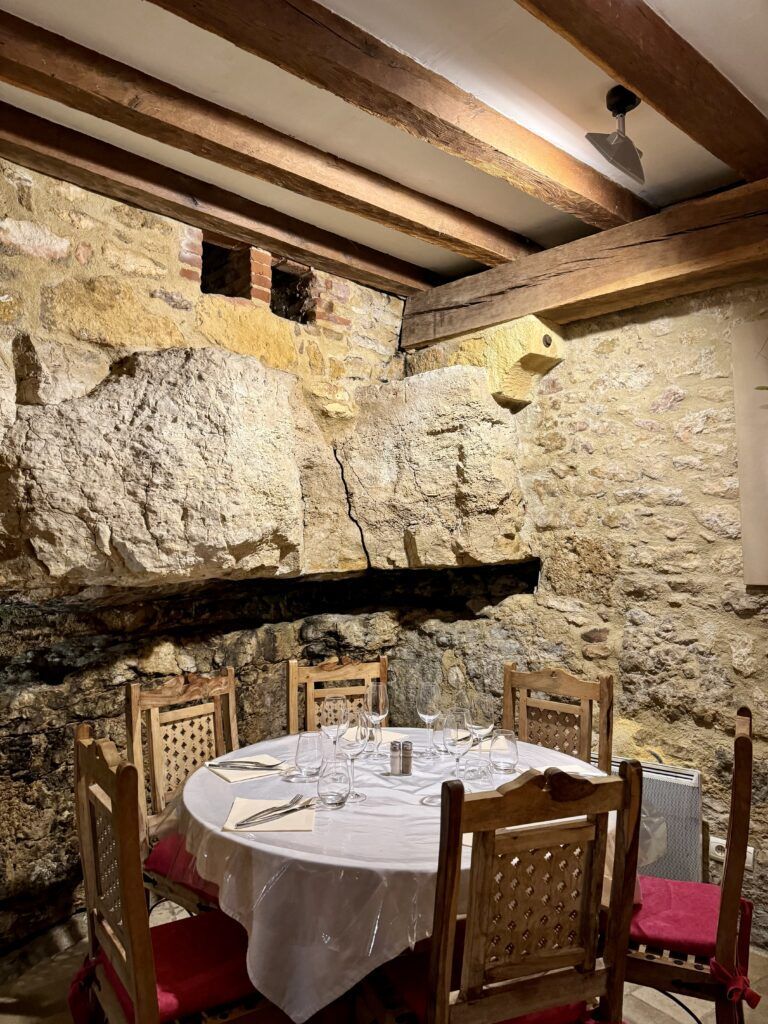

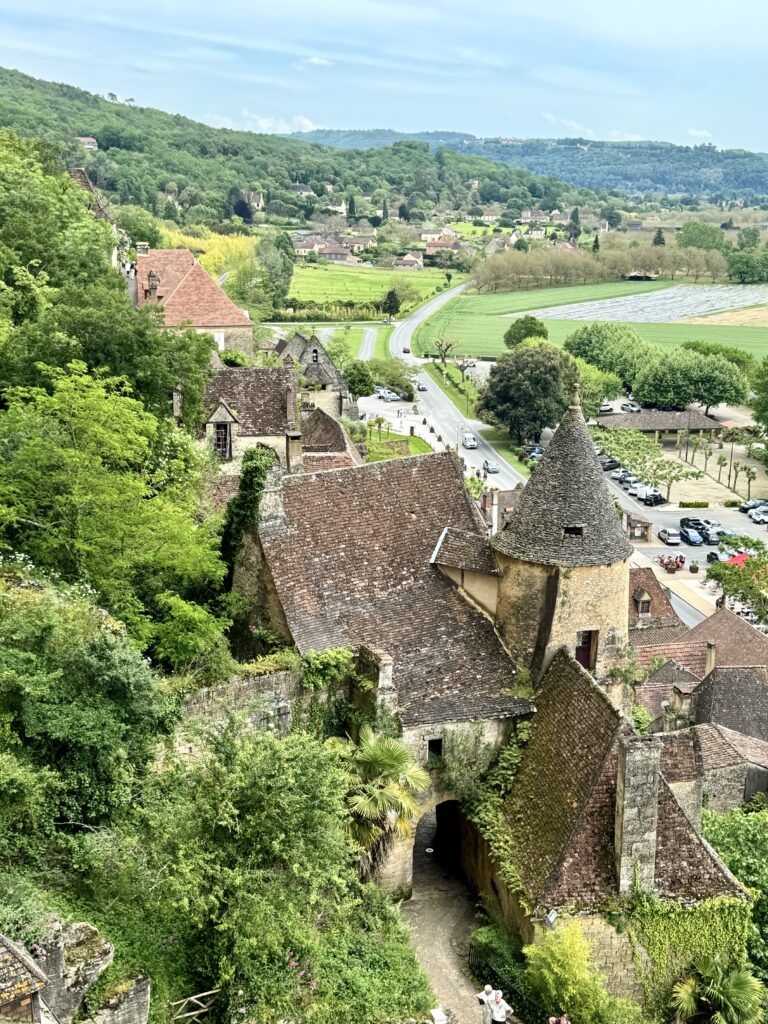

La Roque Gageac
After lunch, head down the road to La Roque Gageac. It’s a magnificent ochre hued village cut into limestone cliffs above the river.
The village boasts traditional Périgordian architecture, with honey-colored stone houses, narrow winding streets, cute shops, and picturesque gardens with exotic plants.
Wind through the narrow lanes. Numerous narrow alleyways lead up to the foot of the cliff, where there’s a magnificent view over the river.
If you’re not scared of heights, you should hike up to the Fort of the Middle Ages. It’s troglodyte fortification that was built into the cliffs during medieval times.
At the edge of the village is the Chateau de la Malartrie. It’s a prime example of 19th entury architecture and can be admired from the river.


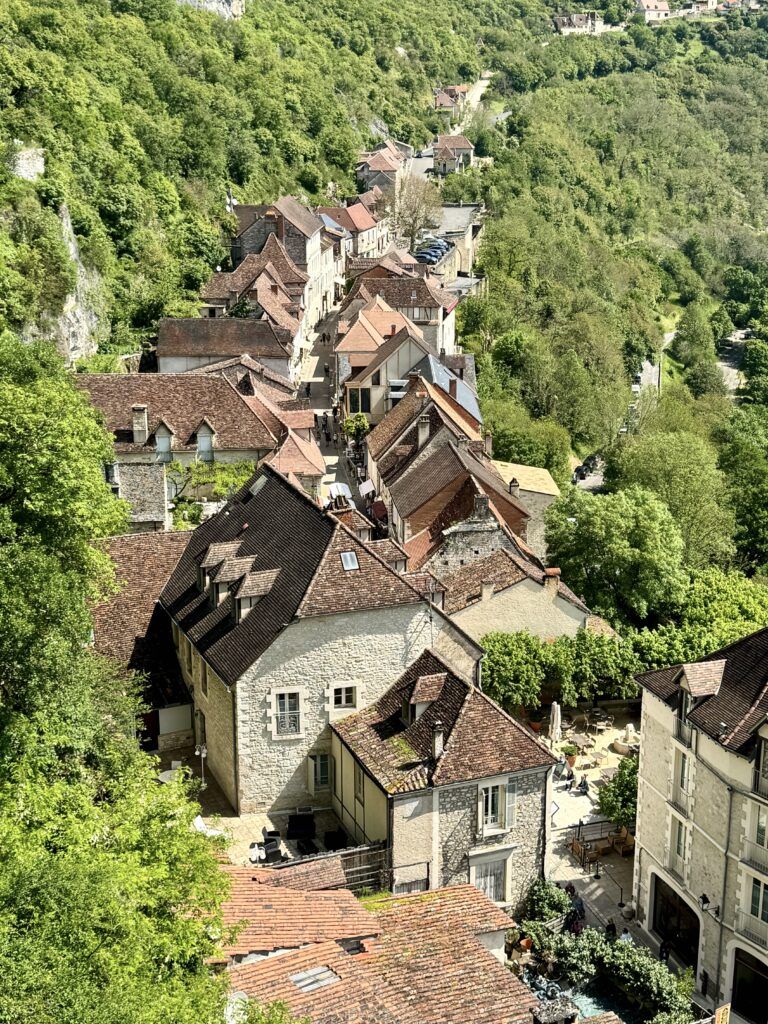
Rocamadour & Carennac or Collanges-la-Rouge
Rocamadour
Rocamadour is a UNESCO-listed cliff hanging town cut into the limestone rock face. The town became famous as a pilgrimage destination because of the 12th century sculpture of the black Madonna thought to have miraculous powers.
You begin in the lower medieval city, which consists mainly of one pedestrianized lane filled with shops and eateries.
To make like a pilgrim, you hike up the Great Staircase. (Pilgrims climbed it on their knees as penance.)
Alternatively, there is a lift that takes you up to the next level of the town, where you’ll find the sanctuaries and chapels that form the Cite Religieuse complex. They are all free to visit.

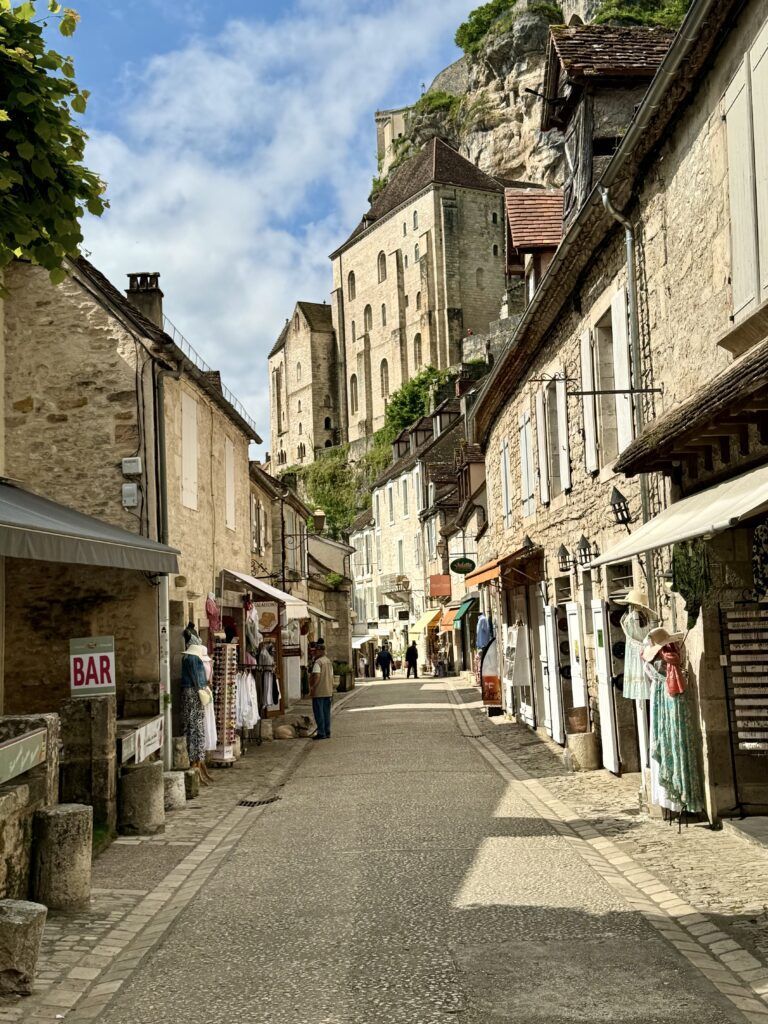
You’ll want to see:
- Chapel of Our Lady (which houses the black madonna)
- Chapel of Saint Michel (12th century frescos)
- Basilica of Saint Sauveur (built in the 11th to 13th centuries)
- Crypt of Saint Amadour (dedicated to the hermit for whom the town is named)
- Chapel of Sainte Anne (gilded altarpiece)
Then, head up a long winding ramp to reach the Bishop’s Palace at the top. On the way up, you’ll encounter the 14 stations of the cross.
You can visit the ramparts of the chateau. There’s a small fee for this and you’ll have to use automated ticket machines.
>>> Click here to book a guided tour to Rocamadour from Sarlat

Carennac or Collanges-la-Rouge
Carennac is about 30 minutes from Rocamadour. It’s a peaceful retreat after the tourist scene at Rocamadour.
Carennac is one of “Les Plus Beaux Villages de France.” It’s known for its well-preserved medieval architecture, scenic beauty, and rich historical heritage.
Carennac boasts a wealth of period architecture, including stone houses with traditional slate roofs, half-timbered structures, and beautifully preserved facades.
One of the village’s highlights is the 11th century Church of Saint-Pierre, known for its remarkable Romanesque tympanum depicting Christ in Majesty. Adjacent to the church is a 12th century cloister.
Or you could opt to visit Collonges-la-Rouge. It’s a village about 45-50 minutes north of Rocamadour that I’ve visited before.
It’s one of the most beautiful villages and hidden gems in France. It features astonishing rust-red stone buildings set in a lush green landscape. It’s like nothing you’ve ever seen!
Known as the “City of 25 towers,” the village boasts stately castles, mansions, and quaint cottages.
Begin your walk on Rue de la Barrière, the main street that looks like a movie set. Medieval buildings adorned with conical turrets, grape vines, and wisteria line the street.
St. Peter’s Church, dating back to the 11th century, has two naves for simultaneous Protestant and Catholic services.
Continue to the covered passage leading to the church square, where you’ll find a beautiful market hall, the site of Collonges’ annual bread festival.

Bergerac, Monpazier & Belves
Today, you can visit three amazing places.
Bergerac
Start by driving to Bergerac. The medieval city has all the charm of the Dordogne can offer — half timbered houses, pretty flower-filled squares, and stone bridges. On top of that, there are myriad street art murals.
The heart of the old town is Place Pelissiere, which is surrounded by shops and outdoor cafes.
You’ll also find a 12th century church and a statue of Cyrano de Bergerac, the 17th century French playwright and duelist, known for his bold personality and large nose.




There are several small museums in the city. But if the weather is fair, I would stick to strolling the street or taking a barge cruise on the river.
Bergerac is also know for its wines, the renown of which goes back to the 13th century.
You can visit the Cloiture des Recollets, a cloister that houses the Maison des Vins. 16th and 18th century galleries look down on the courtyard.
The tourist office can also give you a wine route to see the vineyards. It also hosts Espace de Vin, where you can sample and buy Bergerac wines.

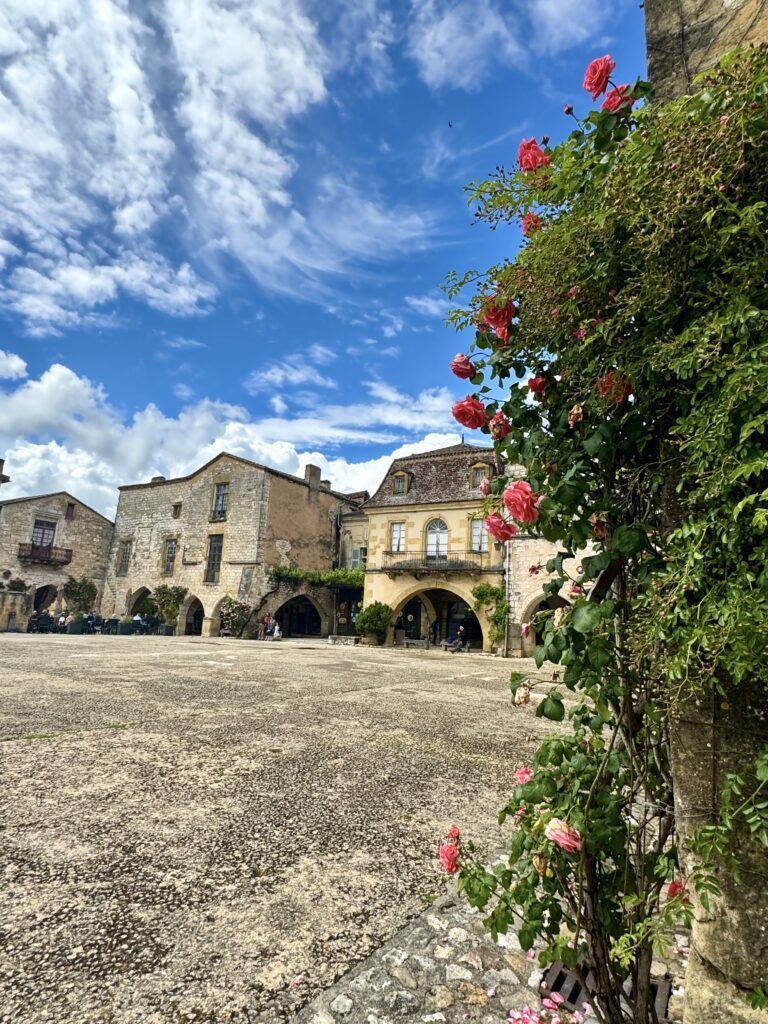
Monpazier
After a leisurely lunch in Bergerac, head to the beautiful village of Monpazier.
Founded in 1284, it’s a bastide (or fortified) town that hasn’t changed in 800 years. The town is set on a grid and covered in climbing roses.
The main square, Place des Corniers, is a beauty — all honey colored buildings with medieval arcades and shops. On Thursday, the square hosts a market.
Stroll through the town, soak it all in, and then head to another of France’s les plus beaux villages, Belves.
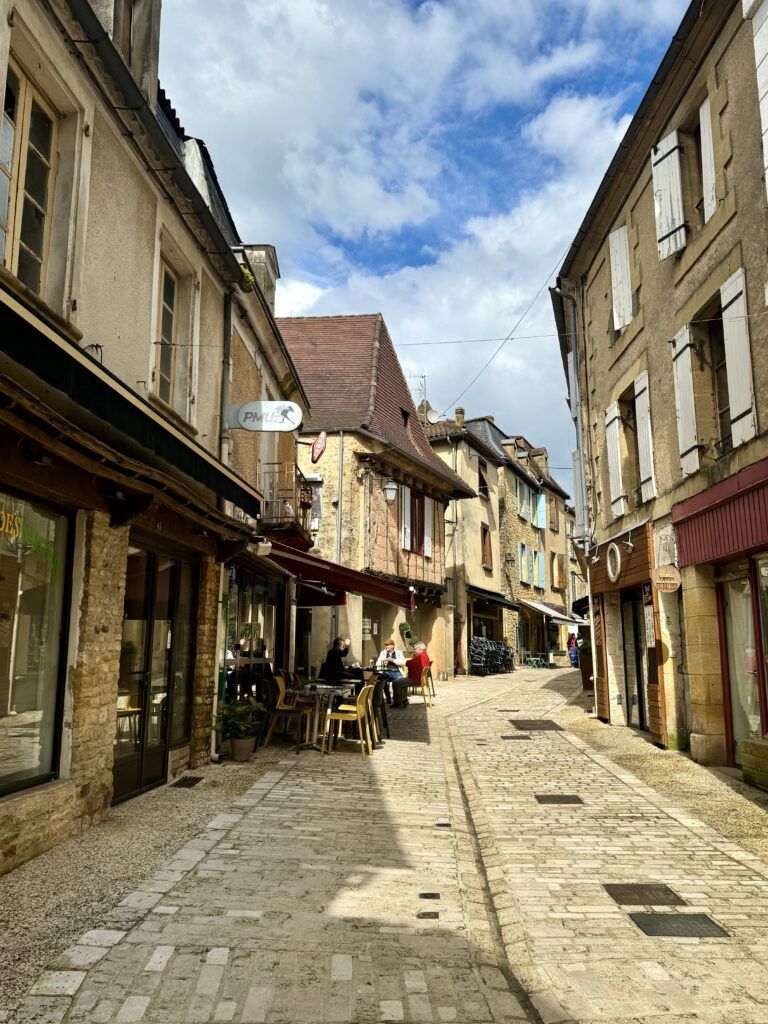
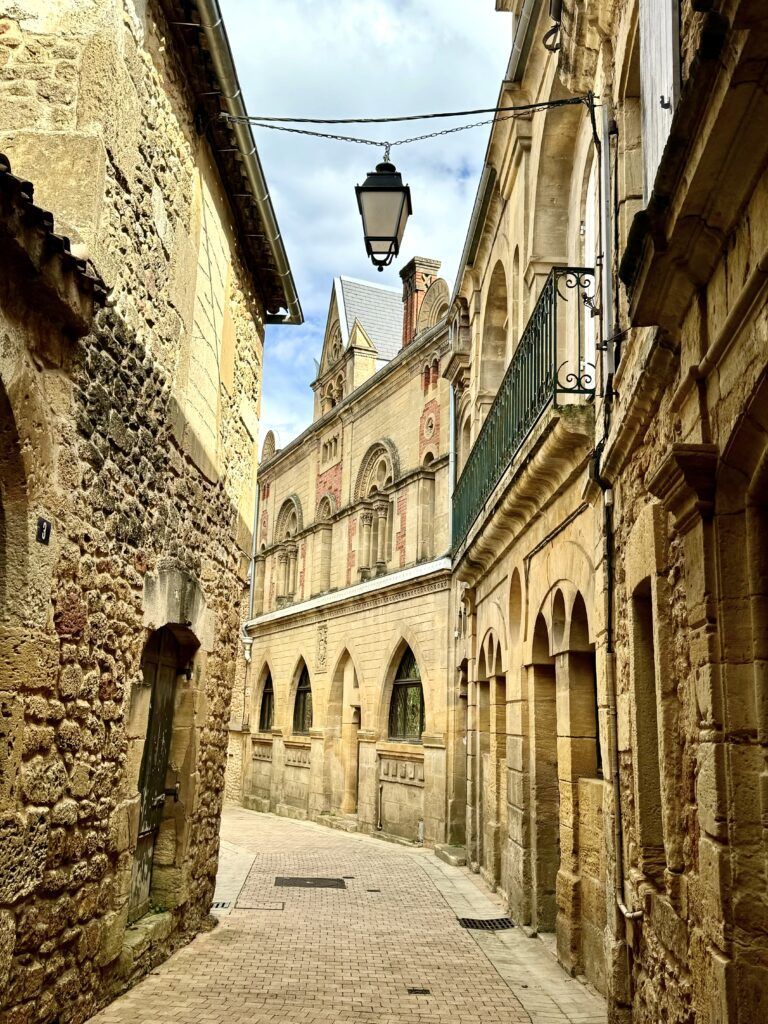
Belves
Belves is a stony village set on a hilltop.
It was a fortress in the 11th century. Today, its center focuses on the Place d’Armes, which once held a 15th century market.
The village is renowned for its medieval architecture, including the impressive belfry, which dates back to the 11th century.
The belfry is a prominent landmark, offering panoramic views of the surrounding countryside.

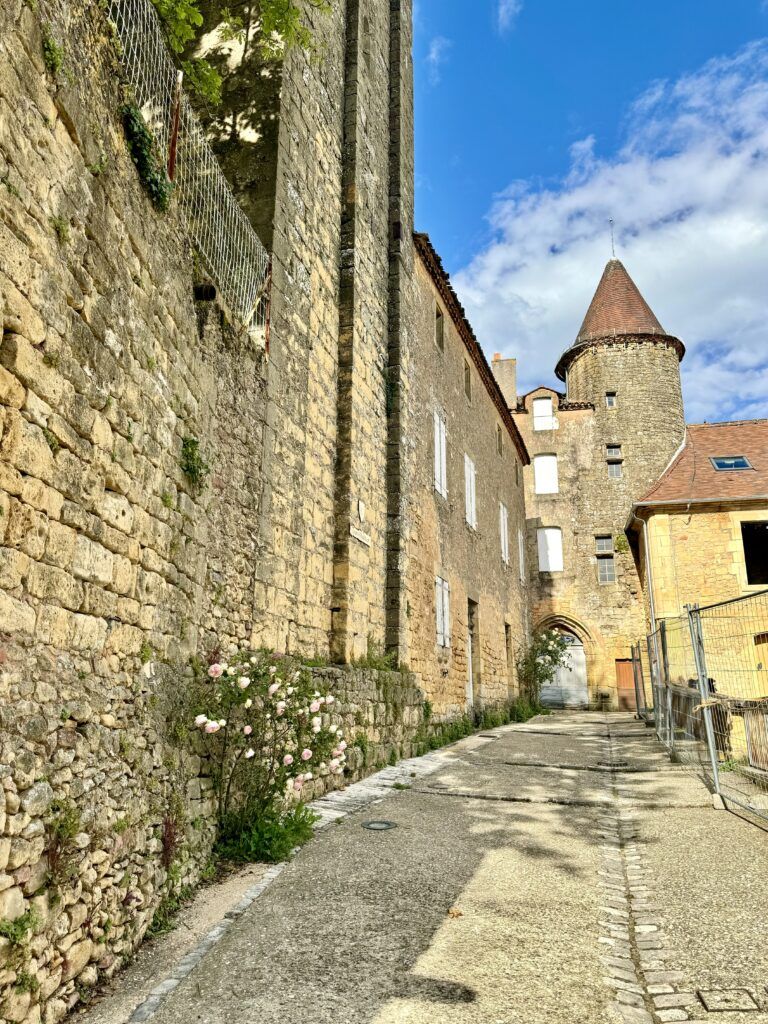
The village also features several well-preserved stone houses, ancient fortifications, and narrow cobblestone streets that create an atmosphere of timelessness.
You’ll also want to walk up to the Church of Notre-Dame de l’Assumption, a Romanesque-Gothic beauty with stained glass windows.
I recommend finishing your visit at Planches et Plonk, a wine and cheese bar on the pedestrianized Rue Jacques Manchotte.
Pro Tips: Call to reserve in advance. The place is always booked and you can’t reserve online. The owner, however, speaks perfect English.

Domme & Chateaux
Domme
Founded in 1281, Domme is another picturesque bastide town known for its rich history, stunning views, and well-preserved medieval architecture.
Domme’s fortified gates, the Porte des Tours and the Porte del Bos, are well-preserved and serve as impressive entrances to the town.
The town’s layout is characteristic of bastides. The central square, Place de la Halle, is surrounded by a grid of streets.

The square is home to the 17th century market hall, hosting markets and events throughout the year.
Streets are lined with honey-colored stone houses, many of which date back to the 13th and 14th centuries.
A unique attraction in Domme is the Grotte de Domme. It’s located at the top of the town in the upper square. You can get there by funicular.
The grotto is a series of natural caves beneath the town discovered in the 16th century. The caves, filled with impressive stalactites and stalagmites, are now open to the public for guided tours.

Chateau de Castlenaud
This chateau could easily take up a whole chapter on French history. It was the prized possession of French and English kings.
The castle saw battles that decided the fate of nations. Today, visitors will love the building’s authenticity, its war museums, and its quaint hilltop village.
You begin in the outer courtyard, head into the keep surrounded by a curtain wall, and admire the armor, weapons, and life size recreations of war machines in the artillery tower.
The curtain wall has a rampart walk, offering up stunning views.

Chateau de Milandes
If you have any time left in the day, head to Chateau de Milandes, just 6 miles from Castlenaud.
Built in 1489 and remodeled in the 19th century, the chateaux was the home of the singer and dancer Josephine Baker.
Part of the castle tour is devoted to her life. Displays of medieval falconry take place in the garden.

Les Eyzies & Perigueux
Les Eyzies & Fonte de Gume
Start day 6 of your 7 days in the Dordogne in Les Eyzies.
The town is known as “the capital of prehistory.” It stretches out along the foot of ochre colored cliffs.
To get a primer on the region’s prehistory, start with a visit to the Musee National de la Prehistoire.
Exhibits cover most most of what is known about early man. It’s a nice prelude to visiting the painted caves of the area.


Then, visit the Grotte de Font-de-Gaume. It’s one of the only caves with prehistoric paintings still open to the public.
You won’t be able to visit without pre-booking a guided tour. Only 60 people can visit each day. English tours are at 11:15 am and sometimes at 1:15 pm in high season.
The cave features over 200 polychrome (multi-colored) and engraved images, predominantly of animals.
These include bison, horses, mammoths, reindeer, and aurochs. The artists used natural pigments like iron oxide and charcoal to create the vivid colors.

Perigueux
After your visit to Domme, drive 30-40 minutes to Perigueux, a small city steeped in time. It was once the Roman colony of Vessuna.
You can visit a Byzantine cathedral, a Gaelic temple and amphitheater, a marketplace, and museums that tell of the Romans.
The cathedral was built in the 12th century and restored in the 19th century. It was used as a model for Sacre Coeur in Paris’ Montmartre district.




The ancient center is a delight to wander. The most beautiful street is Rue Limogeanne, a pedestrian shopping street lined with beautiful medieval and Renaissance homes, shops, and eateries.
Near the Roman sites you can also visit the ruins of the 12th century Chateau Barriere. It’s a very evocative spot.
On market days (Wed & Sat), Place de la Marie, Place du Coderc, and Place Saint-Louis are abuzz with activity.
There are several very niche museums in the city — Truffle Museum, the Vesunna Archaeological Museum, and the Military Museum.
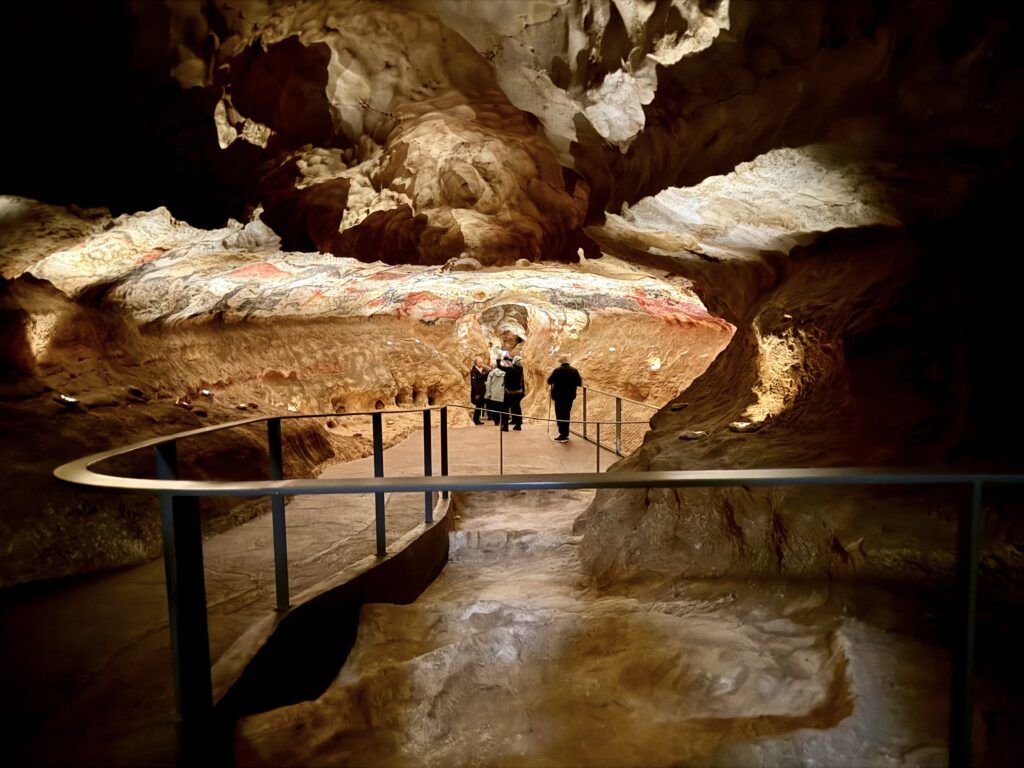
Lascaux IV & Saint-Amand-de-Coly or Chateau Hautfort
Lascaux
On your final day, head to Lascaux in Montignac.
It’s the ancient cave that became known as the “Sistine Chapel of Prehistory.” The cave holds the most important Cro-Magnon panitings on the planet.
Lascaux was discovered accidentally in 1940 by three young men.
It was open to the public for over two decades, but closed when human contaminants harmed the paintings.

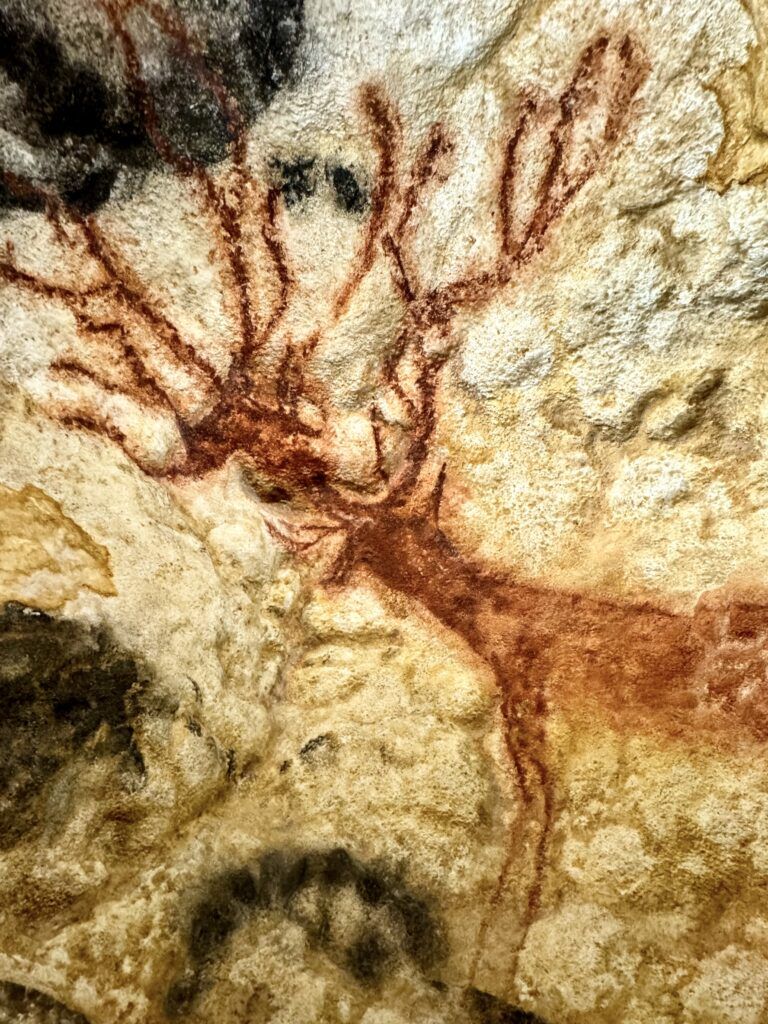
In 2016, the state opened a replica cave called Lascaux IV, which reproduces the original cave and 90% of its paintings.
There’s also an onsite museum and a theater that shows videos about the history of Lascaux and other painted caves around the world.
You’ll definitely need to pre-book an English tour well in advance!
The English tours are usually quite early. Mine was at 9:30 am. You can also book a guided tour from Sarlat.
After Lascaux, head north the Chateau Hautforte or slightly south to the beautiful village of Saint-Amand-de-Coly.
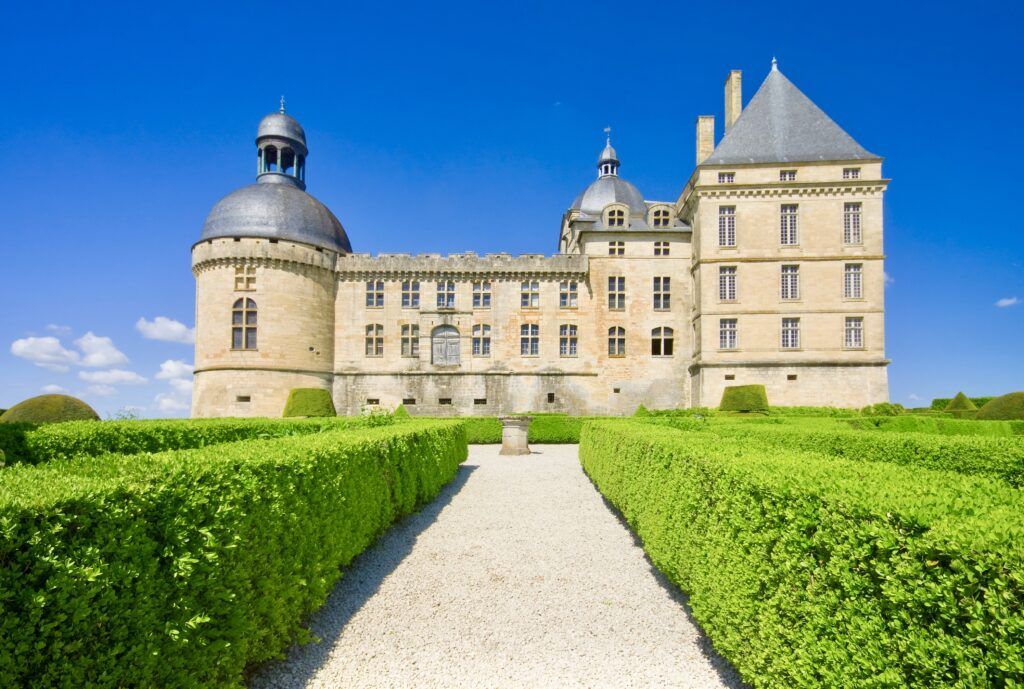
Chateau Hautefort
Chateau Hautefort is about 30-40 minutes from Lascaux.
It towers over the village of the same name. Its peacefulness belies its rather tumultuous history.
The chateau was originally the site of a medieval fortress. In the 17th century, the Marquis de Hautefort replaced it with the imposing building you see today, which is akin to a Loire Valley chateaux.
It was used as a prison during the French Revolution.

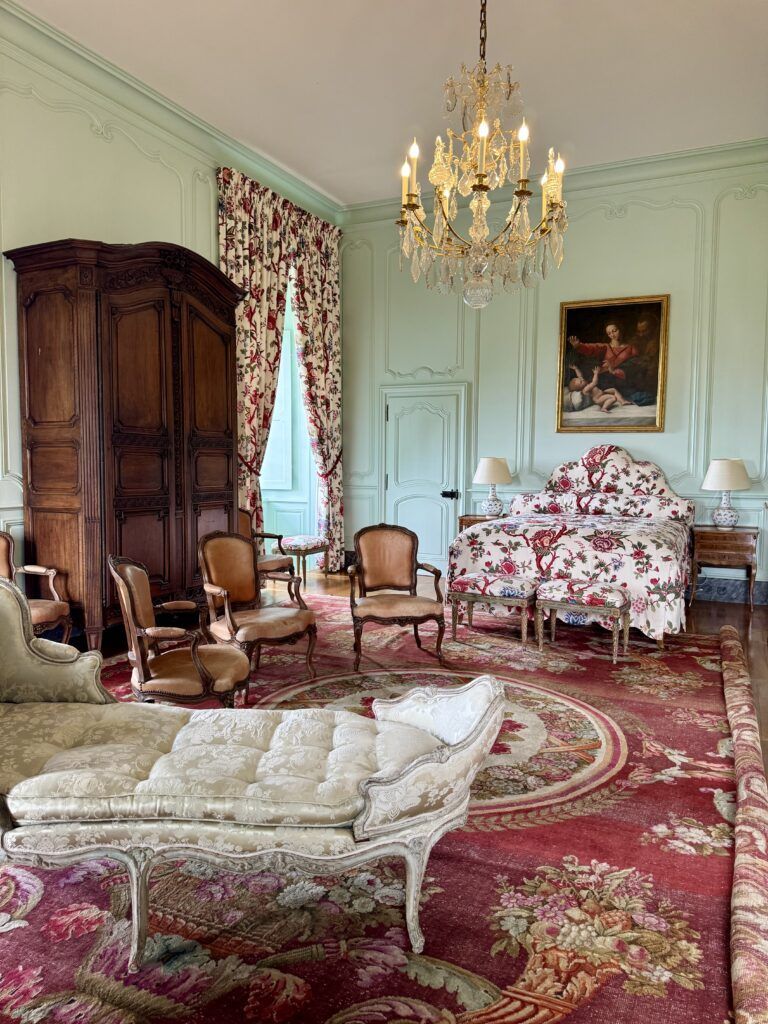
After falling into near ruin, Baron and Baroness Bastard purchased and restored the chateau in the 1920s.
The chateau was damaged by fire, but restored once again.
Today, on a visit, you can see an impressive courtyard, grand staircase, period rooms, a great hall, bedrooms, and a chapel.
You can also stroll through the formal manicured gardens and take a spin up to the top of the Tour de Bretagne for great views of the gardens.

Saint-Amand-de-Coly
If you want to visit another beautiful village instead, Saint-Amand-de-Coly fits the bill.
IThe village exudes historical charm with its stone houses, narrow streets, and tranquil rural setting.
Its abbey, one of the most impressive fortified 12th century churches in the region, has a nave almost 160 feet long and walls 100 feet high.
Tips For Spending 1 Week In The Dordogne
How To Get There
By Air:
- Bergerac Dordogne Périgord Airport: The closest airport to the Dordogne region, with flights from several European cities.
- Bordeaux-Mérignac Airport: A larger international airport about two hours from the Dordogne. From Bordeaux, you can rent a car or take a train.
- Toulouse-Blagnac Airport: A large international airport about two hours away. From here, you can rent a car or take a train to larger cities like Bergerac.

By Train:
- From Paris: Take a high-speed TGV train from Paris to Bordeaux or Libourne, then transfer to a regional train to Périgueux, Bergerac, or Sarlat-la-Canéda.
- From Bordeaux: Regional trains connect Bordeaux to the towns listed above.
By Car:
Renting a car is definitely the most convenient way to explore the Dordogne. It allows you to visit rural areas and attractions that are not easily accessible by public transport.
How To Get Around
If you want to see all the beautiful villages — and you must! — you’ll need your own wheels to get around.

The driving isn’t the easiest. The Dordogne is quite hilly and there are some very narrow roads.
Despite that, we got along quite easily and the GPS worked perfectly even if we were in a very rural spot.
Gas stations are tricky in France.
Some do not accept a credit card without a PIN. In that case, use a debit card, for which you may have to make an initial “deposit.”

I advise stopping at a manned station with a mini mart or service area.
You’ll find these on the highways. At these places, you can pay for gas with your credit card or cash inside if you credit card is refused at the pump.
When To Visit The Dordogne
I visited in early to mid May.
I would advise going a bit later — the end of May or early June. That way, you may escape some of the rare persistent spring rain.
July and August will be hot and busy. So, I would try to avoid those months.
September will also be lovely.


Where To Eat In The Dordogne
I felt like I feasted in the Dordogne!
It’s a foodie region with so many excellent restaurants. I ate out for almost every lunch and dinner.
The cities have the most choice of restaurants. But some of the best restaurants in the Dordogne are in the small picturesque villages.

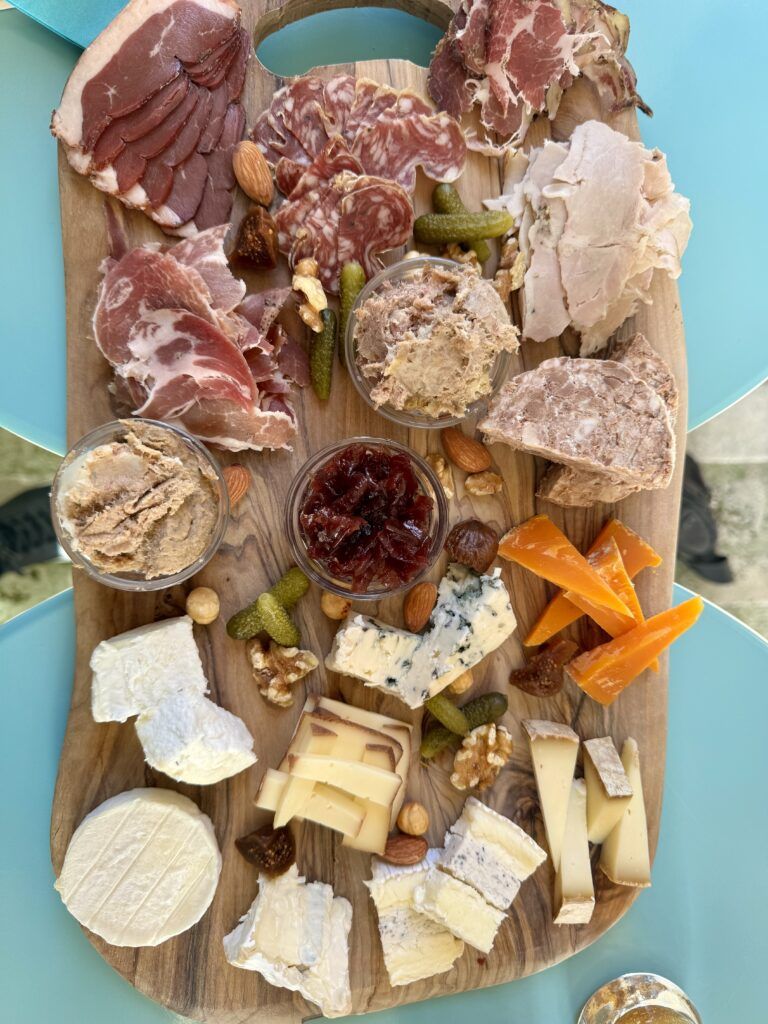
Here were some of my favorite restaurants from my latest trip:
- L’Adresse, Sarlat-la-Caneda
- Le Presidial, Sarlate-la-Caneda
- La Maison, Les Eyzies
- Nosco, Les Eyzies
- Authentik, Bergerac
- Le Saint Jacques, Bergerac
- La Petit Tonnelle, Beynac et Cezanec
- Planches & Plonk, Belves
- La Plaisir de Sens, La Roque Gageac
- L’Essentiel, Perigueux
- Comptoir du Tourny, Perigueux
The specialties in the Dordogna are duck, foie gras, truffles, walnuts, goat cheese, strawberries, and mushrooms (cepes).

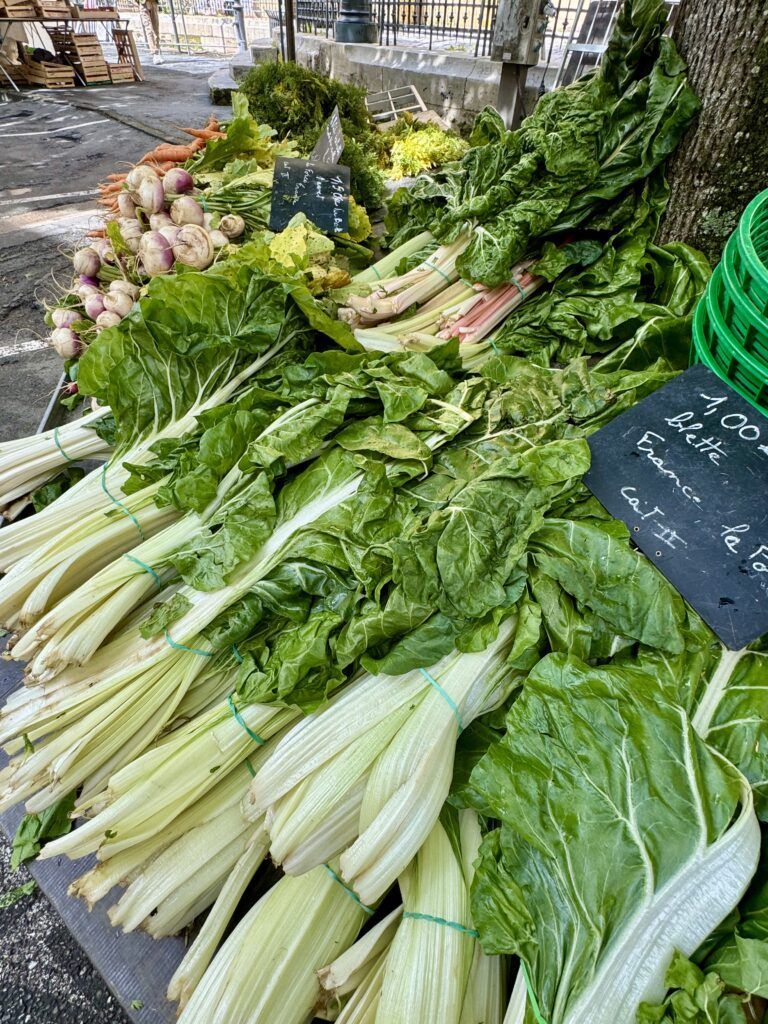
Market Days
If you are staying at your own place and cooking any meals during your one week in the Dordogne, you’ll want to visit some of the region’s amazing markets.
I couldn’t believe how reasonable the prices are!
Here are the days for various towns:
- Monday: Les Eyzies de Tayac
- Tuesday: Le Bugue, Cenac
- Wednesday: Sarlat, Bergerac
- Thursday: Domme, Monpazier
- Saturday: Sarlat
- Sunday: Saint-Cyprien
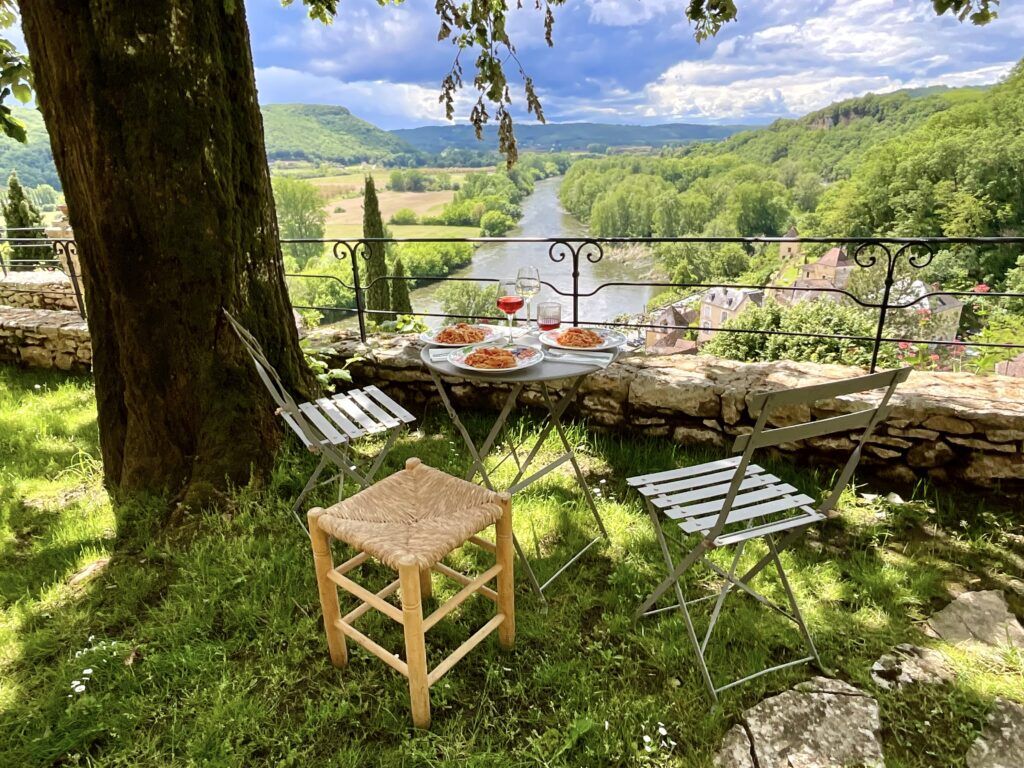
Where To Stay In The Dordogne
The Dordogne is small enough that you can base yourself in one place if you don’t mind driving for day trips.
I recommend staying in or around Sarlat, which is very central. From Sarlat, you can easily get to the places on my one week Dordogne itinerary. The furthest afield you’ll have to travel is around an hour.
If you are in the Dordogne for one week, I would book a place on Air Bnb or VBRO.
I stayed at an Air Bnb in Beynac et Cazenac near Sarlat. It was gorgeous and the perfect base for exploring.
If you prefer a hotel in Sarlat, I recommend Plaza Madeleine & Spa or Clos La Boëtie & Spa in Sarlat.
You could also stay in the peaceful countryside.


Château des Vigiers is located near Monestier, about 45 minutes from Sarlat. It’s a luxury resort surrounded by vineyards and a golf course. It offers elegant rooms, fine dining, a spa, and various outdoor activities.
Want to stay in a castle?
The Château de la Treyne is near Lacave. The historic castle hotel overlooks the Dordogne River and boasts beautifully landscaped gardens. It offers luxurious accommodations, gourmet dining, and a serene atmosphere.
I hope you’ve enjoyed my one week in the Dordogne itinerary. You may find these other southern France travel guides useful:
- 10 day itinerary for southern France
- Charming hidden gems in Provence
- Hilltop villages of the Luberon Valley
- Historic landmarks in southern France
- Beautiful villages in Occitanie
- One day in Avignon itinerary
- Guide to Arles
- Guide to Toulouse
- Guide to Carcassonne
- Guide to Albi
Pin it for later.


